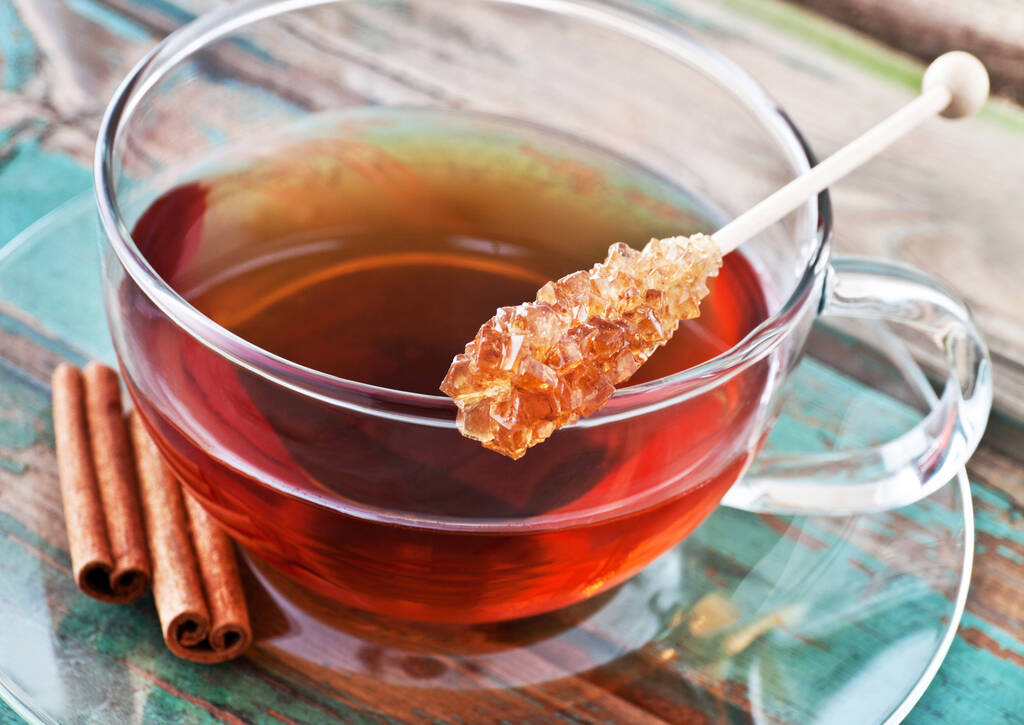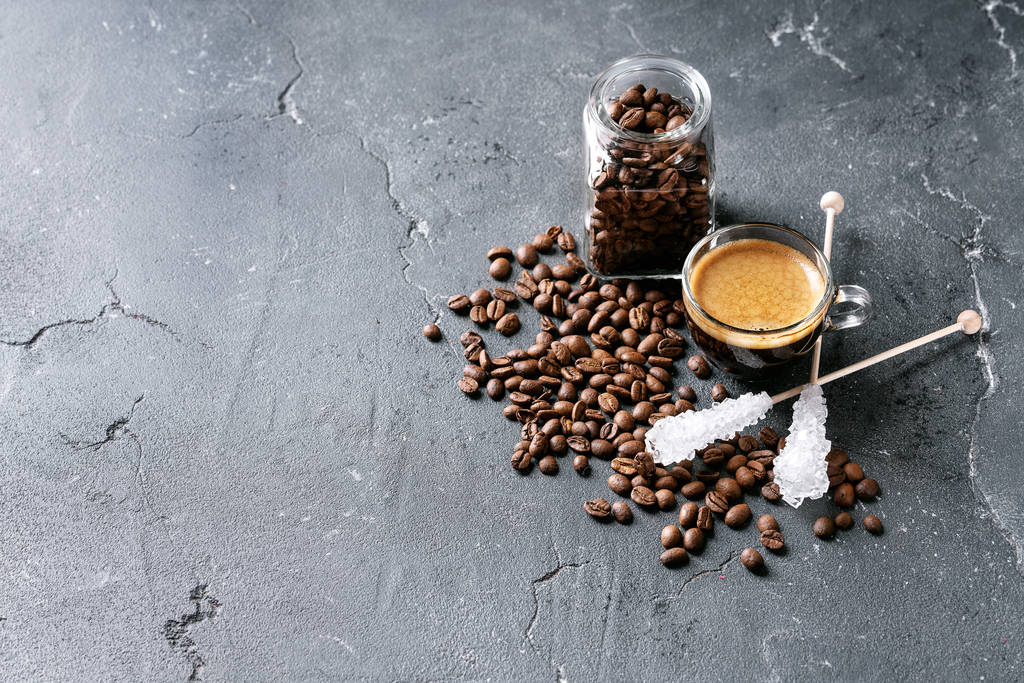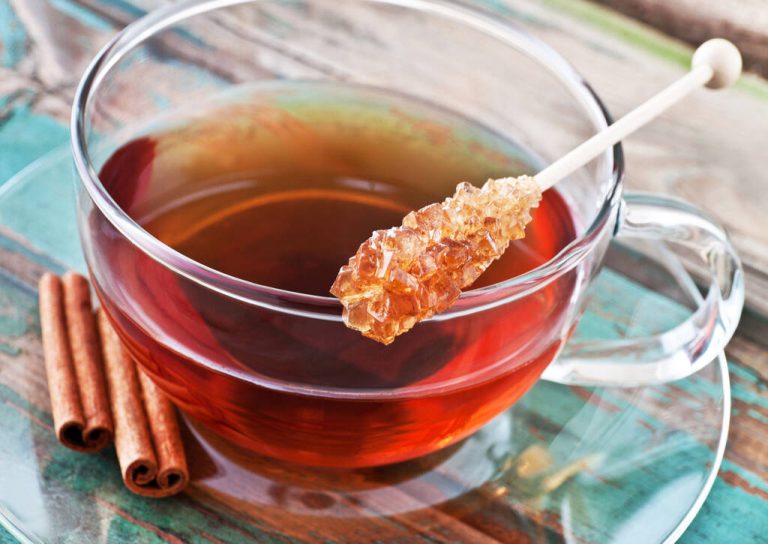Rock candy is particularly popular with tea drinkers. No wonder – the sugar crystals are perfect for sweetening drinks. But how is rock candy made and what distinguishes it from conventional sugar?
Rock Candy: How it’s made
Rock candy originally came from Persia and India, but today many companies in Europe also produce it. The name Kandis derives from the Arabic word for cane sugar (“quand”). Put simply, candy consists of nothing more than large sugar crystals. In order for these crystals to grow, a highly concentrated cane-based sugar solution is heated in large containers.
Threads stretched in the container prevent the crystallizing sugar from sinking. In addition, the sugar solution is constantly in motion. Only in this way can it flow around the crystals on the threads, which are getting bigger and bigger. It can take up to three weeks for the crystals to reach a size of 18 to 24 millimeters.
For brown rock candy, a cane molasses is added to the sugar solution. The crystals are then heated – the molasses now causes the crystals to caramelize. At the same time, the taste of the sugar changes. In addition, the brown rock candy is often colored with caramel colour.
There are these kinds of rock candy
You can get candy in the store in different colors and shapes. Depending on the production method, it is available in brown or white, for example. Like brown sugar, brown rock candy contains a higher proportion of molasses than white sugars.
Depending on what you want to use the rock candy for, there are different shapes:
Cube rock candy: Cube rock candy are large, individually grown, small crystals that dissolve very slowly in liquid. For example, you can sweeten your tea with the crystals, and you can even use the cubes for several cups. East Frisian tea, for example, is traditionally refined with candy cubes.
Crusty candy: For the irregular pieces of this type of candy, candy slabs that have grown flat are broken up and the broken pieces are sieved off. You can also refine tea with crust candy. The candy tastes particularly delicious in homemade apple punch.
Crumbly candy: For crumbly candy, the white or brown sugar crystals are ground very finely. You can also bake well in this form with candy sugar.

This is what separates rock candy from regular sugar
Unlike normal, fine sugar, rock candy consists of coarser sugar crystals that are only lightly ground in some forms. In addition, brown candy sugar types contain a higher proportion of molasses than white sugar. This is why rock candy tastes more like caramel and gives drinks and pastries a special touch.
However, the coarse sugar crystals are not healthier than normal sugar. Both are double sugars, contain around 400 calories per 100 grams and can damage your teeth in large quantities. The highly concentrated sugar solution required for rock candy is made from the raw juice of the sugar cane, which is additionally filtered and concentrated. Because the candy crystals also take a long time to crystallize completely, the production of this type of sugar is quite energy-intensive. This is also the production of white cane sugar: Here the sugar crystals are dissolved and crystallized again and again.
Tip: Whether you buy rock candy or regular sugar, always make sure that the sugar is organic and unrefined. If you would rather avoid sugar altogether, you can also use various sugar alternatives.






